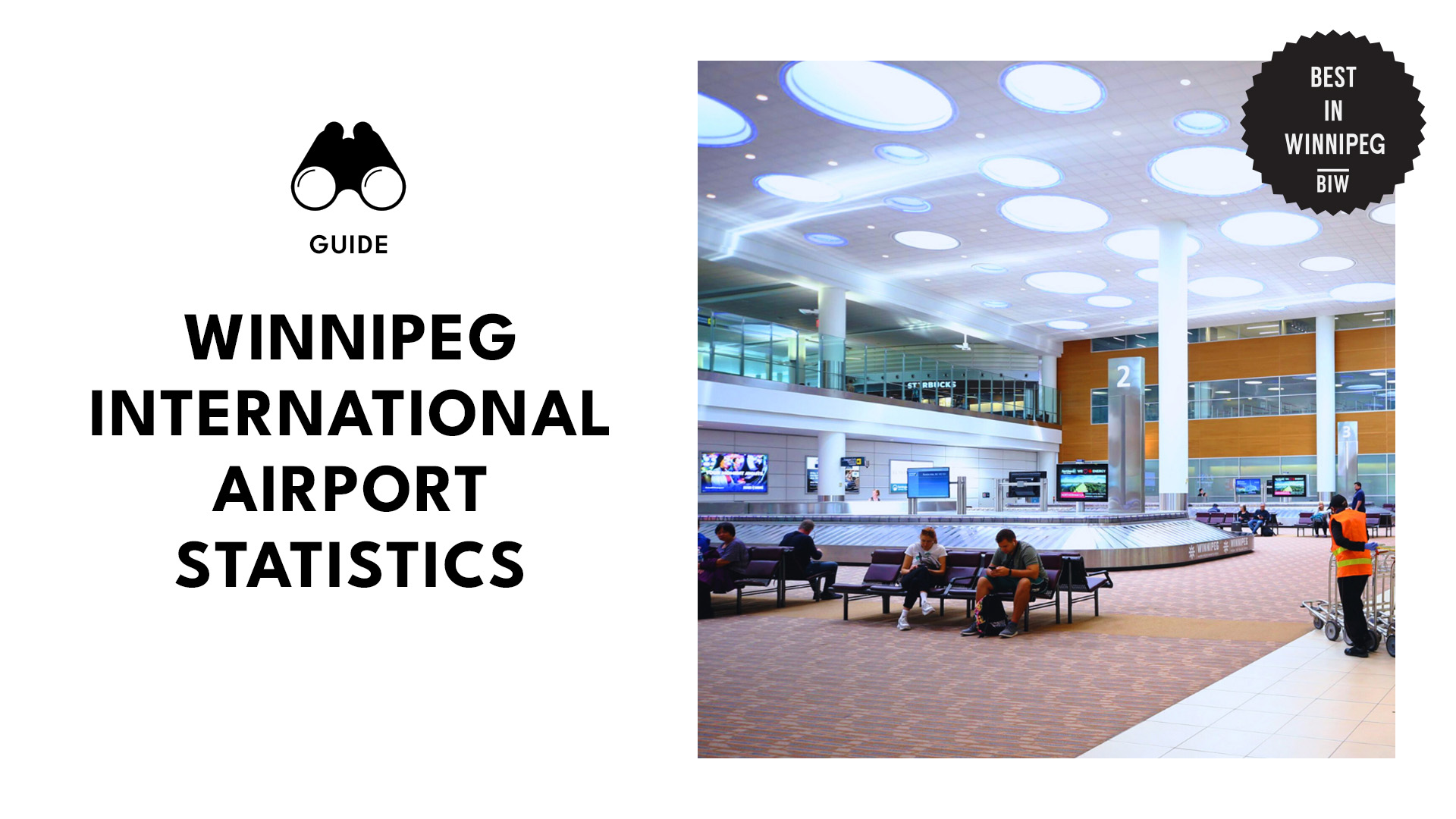Tracking Trends at Winnipeg International Airport: Passenger Traffic and Financial Recovery
Key Insights
- Data from CBC News shows that the Winnipeg Richardson International Airport reached nearly 4.1 million passengers in 2023, recovering 91% of its pre-pandemic traffic from 2019, which was 4.5 million passengers.
- Winnipeg Richardson International Airport managed an average daily passenger traffic of 11,219 people in 2023.
- The airport’s annual report shows that cargo operations in 2023 processed 468,752 tonnes of cargo-related gross takeoff weight, alongside 100,228 total aircraft landings and takeoffs.
- Their financial report also illustrated a significant recovery, with revenues reaching $163.86 million – a 24.3% increase from 2022.
- The airport committed to achieving net-zero carbon emissions by 2050 through its Decarbonization Plan.
CBC News reported that passenger volumes at Winnipeg’s Richardson International Airport surged to almost 4.1 million in 2023, representing a significant rebound in air travel.
This figure marks a return to 91% of the airport’s pre-pandemic passenger traffic, last recorded at 4.5 million in 2019.
The devastating impact of COVID-19 saw numbers plummet to 1.3 million in 2020 and further dip to 1.2 million in 2021.
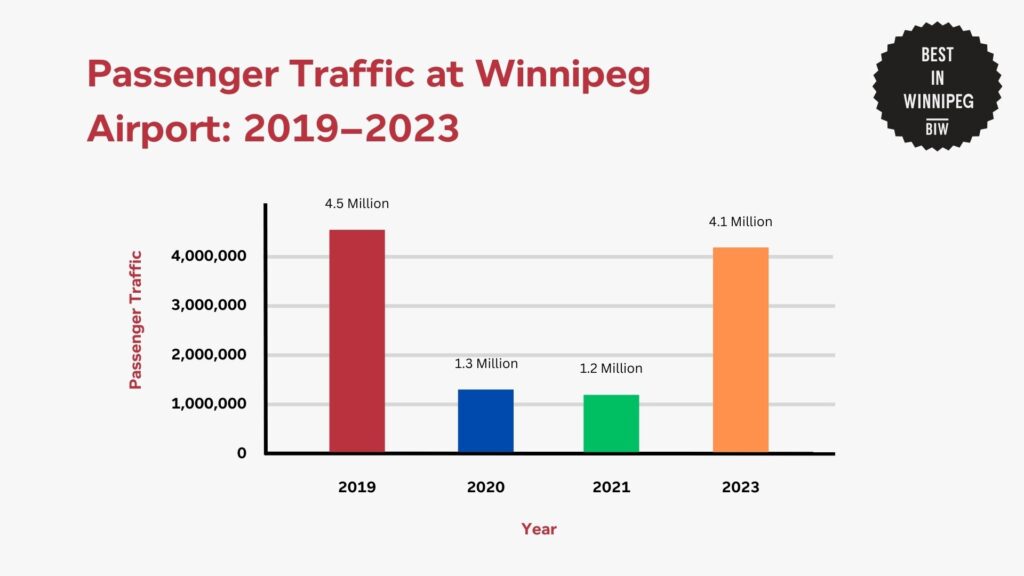
Facts About Winnipeg Richardson International Airport
The Winnipeg Airport’s 2023 Annual Report provides insights into their daily operations.
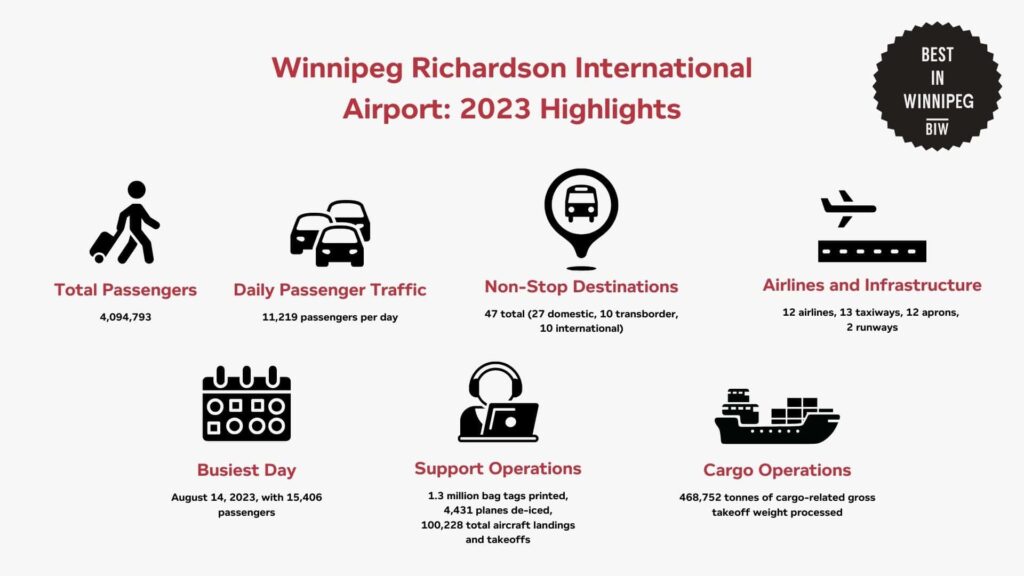
In 2023, Winnipeg Richardson International Airport saw a passenger volume of 4,094,793, marking an increase of 1,063,680 passengers compared to 2022 – a growth of 35.1%.
This significant rise reflects the broader recovery of air travel following the disruptions caused by the COVID-19 pandemic.
The airport’s infrastructure supported this resurgence, with two runways, 13 taxiways, and 12 aprons accommodating 100,228 landings and takeoffs.
The record-setting day on August 14, 2023, with 15,406 passengers, further highlights the airport’s capability to handle peak traffic efficiently.
Trends in Passenger Traffic at Winnipeg Richardson International Airport
The Winnipeg Richardson International Airport reported significant fluctuations in passenger traffic over the past decade, reflecting broader global trends and local developments.
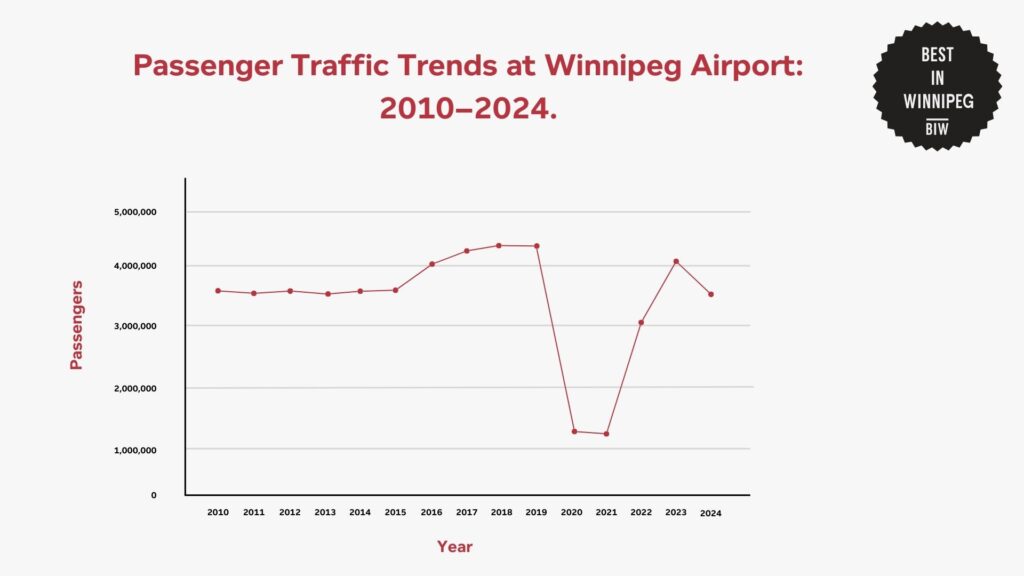
The peak of 4.48 million passengers in 2019 marked a milestone before the global COVID-19 pandemic caused a sharp decline in air travel.
Passenger numbers plunged to 1.29 million in 2020, representing a staggering 71.1% drop, and further declined slightly in 2021.
The recovery began in 2022, with a 147.8% year-over-year increase, as travel restrictions eased and demand for air travel surged. In 2023, passenger volumes reached 4.09 million, approaching pre-pandemic levels.
Financial Performance of Winnipeg Richardson International Airport
Data from the Winnipeg Airport’s 2023 Annual Financial Report gives insights into revenue recovery and operational performance following challenges faced during the pandemic years.
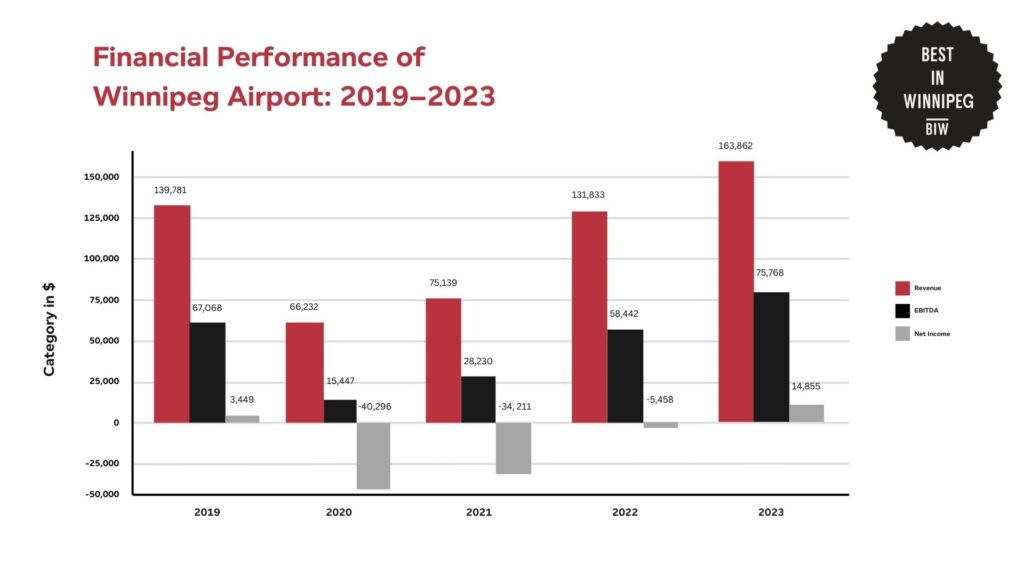
In 2023, Winnipeg Richardson International Airport reported a revenue of $163.86 million, a 24.3% increase compared to $131.83 million in 2022. This growth reflects the continued recovery of air travel and increased passenger volumes.
The airport’s net income also turned positive, reaching $14.86 million, a significant improvement from the $5.46 million loss recorded in 2022.
Operating expenses rose to $75.34 million, reflecting higher activity levels and associated costs. Ground lease rent also increased to $12.75 million, up from $8.77 million in 2022.
Despite these higher costs, earnings before interest, taxes, and depreciation (EBITDA) grew by 29.9% year-over-year, reaching $75.77 million.
Ongoing Projects at Winnipeg Richardson International Airport
In its annual report, the Winnipeg Richardson International Airport promises several transformative projects to bolster its infrastructure, enhance operations, and foster economic growth.
One example is their Multi-Tenant Air Cargo Logistics Facility, a state-of-the-art cargo facility spanning 142,500 square feet.
The project aims to accommodate the growing demand for air freight, improve operational efficiencies, and attract new businesses to the region.
Supported by funding from Transport Canada’s National Trade Corridors Fund, this facility will enhance Winnipeg’s position as a critical link in the global supply chain and provide essential services for Canada’s northern communities.
As part of its commitment to environmental sustainability, the airport has also developed its first-ever Decarbonization Plan, targeting net-zero carbon emissions by 2050.
Beginning in 2024, the airport will implement energy management initiatives to reduce greenhouse gas emissions, leveraging Manitoba’s clean energy resources.

The Future of Winnipeg Richardson International Airport
As the aviation industry evolves, several key trends are shaping the future of airports like Winnipeg Richardson International Airport.
The World Economic Forum illustrates how trends in net-zero carbon emissions influence airport practices, with the adoption of sustainable practices such as electric ground vehicles and renewable energy sources.
OliverWyman also reports on digital trends driving the future of airports, with the integration of artificial intelligence (AI) and augmented reality (AR) enhancing operational efficiency and passenger experiences.
The implications of these trends for Winnipeg Richardson International Airport include the need for substantial investment in sustainable infrastructure and advanced technologies.
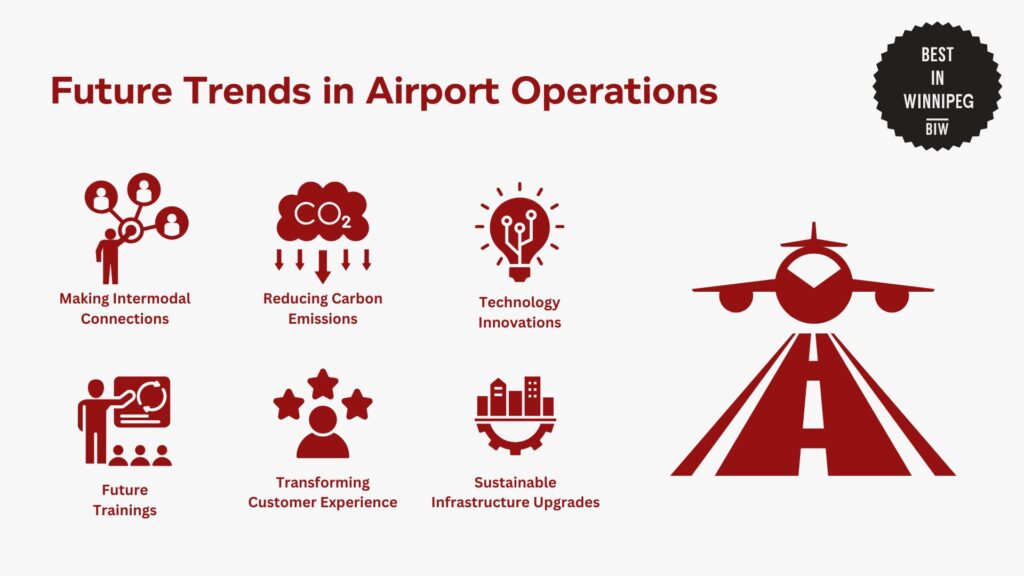
References
- CBC News. (2024, June 12). Winnipeg airport passenger numbers near pre-pandemic levels. Retrieved from https://www.cbc.ca/news/canada/manitoba/winnipeg-airport-pssengers-1.7106412
- Winnipeg Airports Authority. (2023). 2023 Annual Report. Retrieved from https://www.ywg.ca/assets/pages/2023-Annual-Report-FINAL-2.pdf
- Winnipeg Airports Authority. (2023). 2023 Financial Report. Retrieved from https://www.ywg.ca/assets/pages/2023_Financial_Report-FINAL.pdf
- World Economic Forum. (2023, July). Discover the 5 trends shaping the next generation of airports. Retrieved from https://www.weforum.org/stories/2023/07/discover-the-5-trends-shaping-the-next-generation-of-airports/
- Oliver Wyman. (2024, May). Digital trends and the future of airports. Retrieved from https://www.oliverwyman.com/our-expertise/insights/2024/may/sxsw-digital-trends-future-of-airports.html

